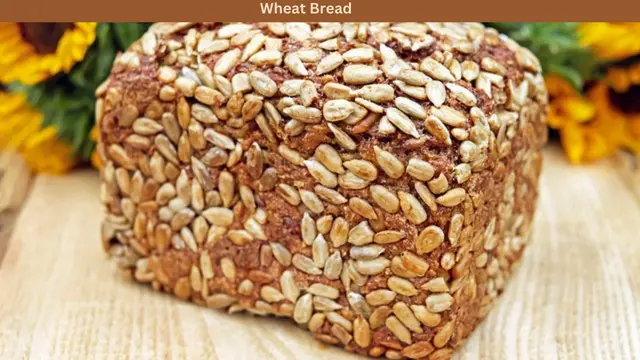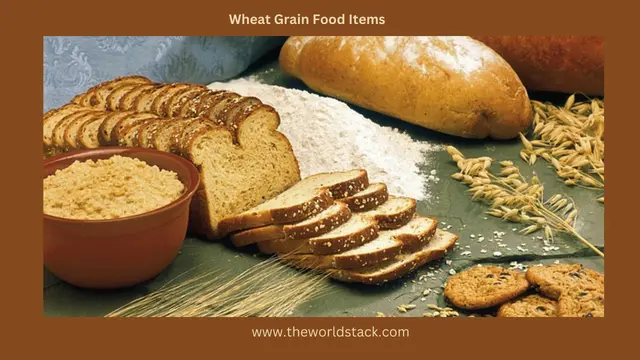Wheat grain is a nutrient-rich gift for breadmaking and more, offering a range of benefits. This exceptional miller’s wheat blend, made with imported grain-based to ensure high protein content, plays a vital role in various culinary endeavors. In this article, we will look at the different types of wheat grain – delving into its significance in breadmaking, showcasing its nutritional benefits, and emphasizing its important role in our daily lives.
The Fundamentals of Making Bread

Bread-making is one area where wheat grain truly excels. Specifically, high-protein wheat is the foundation for both homemade and professional bread production. What sets it apart is its uniform excellence, making it ideal for creating dough with excellent gluten formation.
How to Make Bread Using Wheat Grain?
If you want to bake bread out of wheat grain, you can follow a straightforward procedure that calls for grinding the wheat into flour and then combining it with other components. A fundamental outline of the procedure is as follows:
Get the Wheat Grinded
First, the wheat must be ground into flour. This is the first step. It is also possible to purchase wheat flour in the event that you do not possess a wheat grinder.
Integrating the Components
A big bowl should be used to combine the following ingredients: yeast, sugar, Crisco, lemon juice (or vitamin C tablets), powdered milk, and warm water.
Adding Flour
Bread flour should be added to the mixture in a slow and steady stream, and the mixture should be allowed to settle until it turns thick and frothy.
Whole Wheat Flour Should Be Added: While stirring, gently incorporate melted butter, honey, salt, and whole wheat flour into the dough. Continue doing this until the dough begins to pull away from the work surface.
Kneading
The dough should be transferred to a work area that has been dusted with flour, and then it should be kneaded until it achieves the proper consistency.
Rising
The dough should be allowed to rise in a bowl that has been oiled until it has doubled in size.
Proceed with shaping and baking by punching down the dough, dividing it into loaves, placing them in loaf pans that have been greased, and allowing them to rise once more. Bake in an oven that has been prepared until the top is golden brown.
Enjoy
After it has been baked, the bread should be allowed to cool before being sliced and enjoyed with the toppings or foods that you favor the most.
With the help of these instructions, you will be able to make a mouthwatering loaf of whole wheat bread with wheat grain serving as one of the primary components.
What Is Gluten?
Gluten, also referred to as “protein glue,” is a complex combination of proteins found in wheat, barley, and rye. Its role is crucial in providing bread and pizza with their distinct structure and desired chewy, elastic texture. Due to the high protein content in wheat grains, gluten formation occurs more readily, making it ideal for creating dough used in bread and pizza-making.
The Protein-Rich Powerhouse
A noteworthy trait of fiber-rich product, particularly the high-protein variety, is its impressive protein content. It contains over 15 grams of protein per 100 grams, making it a rich source of dietary protein for those looking to increase their intake.
Dietary Benefits of Wheat Protein
The Role of Wheat Protein in Your Diet Protein is essential for various bodily functions, including muscle growth and tissue repair. If you’re seeking to fulfill your daily protein needs, adding high-protein wheat grain to your diet can be a valuable choice. It not only benefits fitness enthusiasts but also individuals striving to maintain a well-rounded and balanced diet.
A Nutritional Powerhouse
This crop yield provides more than just protein. It is a great source of dietary fiber, which helps promote healthy digestion. Additionally, wheat contains essential minerals that make it a nutritious choice compared to refined white flour.
Dietary Fiber for Digestive Health
Promoting Digestive Health with Dietary Fiber Fiber plays a crucial role in maintaining a healthy digestive system. It helps regulate bowel movements, prevents constipation, and supports the growth of beneficial gut bacteria. By incorporating wheat into your diet, you can easily increase your daily fiber intake and promote overall well-being.
Mineral Abundance
Whole wheat grain is a nutrient-rich food that provides essential minerals like magnesium, phosphorus, and zinc. These minerals are vital for supporting important bodily functions, including bone health and immune system support. Choosing whole wheat grain over refined white flour allows you to benefit from its natural mineral wealth.
The Versatility of Wheat Grain

Wheat grain serves a vital role in a wide range of culinary creations, beyond just breadmaking. From pasta and pastries to cereals and snacks, it plays a versatile role in satisfying our taste buds. Additionally, wheat grain provides essential nutrients to fulfill our nutritional needs.
The Heart of Pasta
The Essence of Pasta is cherished staple in various culinary traditions, owes its very existence to the humble wheat grain. In particular, durum wheat, known for its hardness and high protein content, reigns supreme as the preferred choice for crafting pasta. Its exceptional gluten formation is what gives rise to that beloved al dente texture adored by pasta enthusiasts everywhere.
Wheat Grain in Pastries
The flour is essential for creating delicious pastries and baked goods. It adds a multitude of textures and flavors to treats like flaky croissants, tender cakes, and irresistible cookies. Its versatility makes it an indispensable component in the world of baking.
Breakfast Cereals and Snacks
Cereals and snacks that are commonly consumed for breakfast often include wheat grain as a primary ingredient. The distinct nutty flavor and satisfying texture of wheat make it a popular choice for creating delicious morning treats and convenient on-the-go snacks. Whether it’s crunchy granola or wholesome muesli bars, the addition of wheat adds a delightful element to our favorite breakfast options.
Conclusion
A special place in our culinary universe belongs to Wheat Grain: Nature’s Nutrient-Rich Gift for Breadmaking because of its high protein content, dietary fiber, and mineral content. In addition to being an essential element in breadmaking, it is a versatile ingredient that improves a variety of cuisines. You are enjoying the essence of wheat grain, an age-old gift from nature that still nourishes and captivates us, whether you are eating a loaf of freshly baked bread or a bowl of rich pasta.
When you incorporate wheat grains into your diet, it allows you to embrace a culinary tradition with a deep history that spans centuries. Not only does it provide essential nutrients, but it also adds a touch of simplicity and nostalgia to your meals. So the next time you savor a slice of warm bread with its golden crust or indulge in your favorite spaghetti dish, take a moment to appreciate the humble yet significant role that wheat plays.
FAQs
Q1. What distinguishes wheat grain from other grains in terms of protein content?
Wheat grain, particularly high-protein wheat grain, provides significantly higher levels of protein than other grains such as rice and corn. It strikes out as a high-protein source since it provides more than 15 grams of protein per 100 grams.
Q2. Can those who are gluten-free or have a history of celiac disease ingest wheat grain products?
If you have gluten sensitivities or celiac disease, you must exercise precaution while consuming wheat-based goods because they contain gluten. Fortunately, gluten-free alternatives are available for persons with gluten-related dietary restrictions.
Q3. What are some unusual culinary uses for wheat grain other than bread and pasta?
Wheat grain is quite flexible and can be used for a wide range of cuisines. Many recipes benefit from its flavor, texture, and nutrition. Hearty salads, savory pilafs, and satisfying grain bowls are just a few of the examples of excellent culinary applications for wheat grain.
Q4. What role does wheat grain play in sustainable agriculture?
Wheat grain is essential to organic farming because it serves several functions. It contributes to soil stability by reducing erosion, decreases dependency on synthetic fertilizers, and provides important nutrients for human consumption as well as livestock feed.
Q5. Is wheat grain related with any ancient customs or cultural practices?
Wheat has a fascinating historical significance that is firmly ingrained in human civilization. This staple crop has long been regarded as a symbol of sustenance, fertility, and rebirth by numerous civilizations, and has played an important role in their cultural traditions and rituals.
Read More: “While you examine the nutritional benefits of wheat grains, it’s equally important to consider your overall well-being. Learn about the importance of proper hydration and ‘How Much Water Should I Drink? 3 Key Reasons’ to maintain a healthy lifestyle.”

